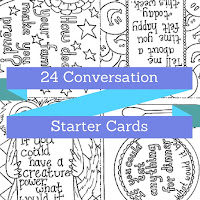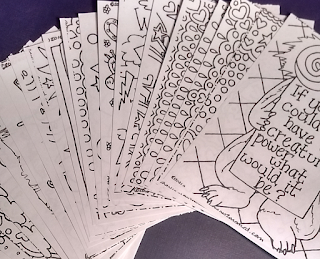
If you haven’t read
McKenzie’s post about chore charts or our other posts about chores and teaching
responsibility, you really should. McKenzie and her 5 and 3 year old kids,
along with her husband, are still early in their parenting journey and figuring
out what methods work best for their family. I have had 17 years of parenting and experience with my son, a neice, and an ex's children and have tried a variety of chore charts and systems. Below is one of the most important lessons I have ever learned as a parent when it comes to assigning chores. It's so simple and obvious that most of us miss it...
I absolutely love the
chore charts McKenzie made for her kids and love that she was thoughtful about
using pictures since her children are not yet reading. Symbols can have just as
much meaning as written words (sometimes more!) and this is such a great tip if
you have younger children or children who are learning to read at later ages
{{more on late readers another day!}}.
When my son was young, I
tried a variety of chore charts, task lists, money incentives, and so on.
Pretty much none of them really worked all that well. They simply weren’t right
for us. While I love rules and order in some areas of my life, chores is not
one of them! My son is very much the same way. Instead of doing set chores on
set days or at set times, we both do best when certain chores are done when
they obviously need to be done—for example, if the sink has dishes in it,
someone needs to wash the dishes.
Over the years (my son
is almost 18), our chore system has evolved. When he was much younger, I did
chores alongside him, providing guidance as he learned new skills, eventually
giving him more and more responsibility until he could do tasks nearly
independently. I didn’t expect perfection, but I did expect competence.
I realized quite early
on that my son, and many other children I have worked with, need concrete,
targeted instructions.
It simply wasn’t enough
for me to say, “Go clean your room.” My son might look at his room and think it
looks clean while I might look and see a disorganized disaster zone. Words like
clean, organized, tidy, picked up, and so on are open to interpretation and
often you and your child may not be on the same page.
I began to switch from
“Go clean your room” to “Please put all of your Nerf darts in their container.
Then, put all of the clothes on the floor in the hamper” followed by more
specific, task oriented instructions as we went along. My son needed to
understand what “clean your room” meant to me before he could really complete
the task. The same is true of many other household chores.
Telling a child “Make
your bed” may seem pretty straightforward, but what if it isn’t? What if you
child goes into his or her bedroom, comes out five minutes later, and then you
find the bed in nearly the same state in which you had last seen it?
You ask your child, “Why
didn’t you make your bed like I asked?”
Chances are you’ll
receive a reply such as, “I did!” or a shrug of the shoulders.
It was times like those
that made me examine the task I had given and how I had given it (after I was
able to shake off my feelings of frustration, of course!).
Had I explained my
expectation that a “made” bed means the pillows at the head of the bed and in
their cases?
That the sheets should be pulled up and about even across the bed?
That the comforter or duvet should also be pulled up and about even across the
bed?
That any extra blankets should be folded and on top of the bed?
Had I ever had my child
watch me or help me make the bed to begin with???
I know that I do best on
tasks when I have a clear understanding of what is expected, and I often do
even better when the task is demonstrated for me, and even better still if
someone guides me through steps as I do the task myself.
Next time you find yourself frustrated by your child's inability to complete their chores, ask yourself if you have given them specific enough instructions.
Did you tell them that putting away their clean clothes means socks in this drawer and shirts in that drawer?
Did you explain that putting away toys means stuffed animals on the bed, books on the shelf, and blocks in the bin?
Did you demonstrate how to properly wash and dry a plate, cup, bowl, and silverware before asking them to do dishes?
Be specific.
Be concrete.
Lead by example.
Children do best when they know exactly what is expected of them. Next time you assign chores or any other tasks, be sure you've explained what the job actually entails and what you expect from your kids. If you aren't specific, how will they know what to do?
In future posts, I’ll
write about our current version of the chore chart and I’ll also share how
competitiveness between two sisters got them to do their chores.
When was the last time
you explained your expectations about chores to your children or actually
taught them in a hands on way to complete a task? What methods of assigning
chores have or have not worked in your family? Share by leaving a comment!
Make sure to like our page on Facebook to stay up to date on blog posts, giveaways, interesting article, and much more. Join in HERE.










